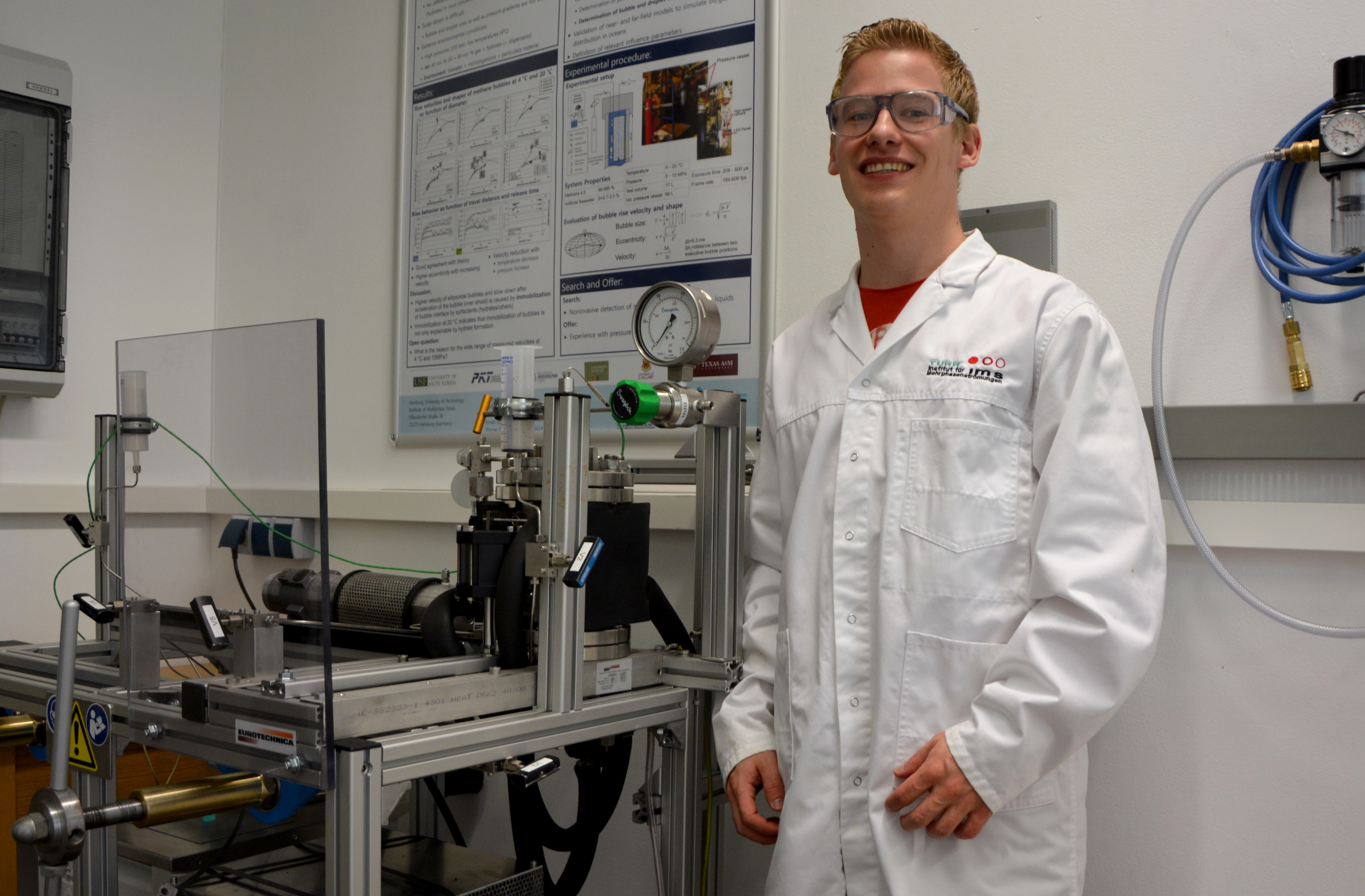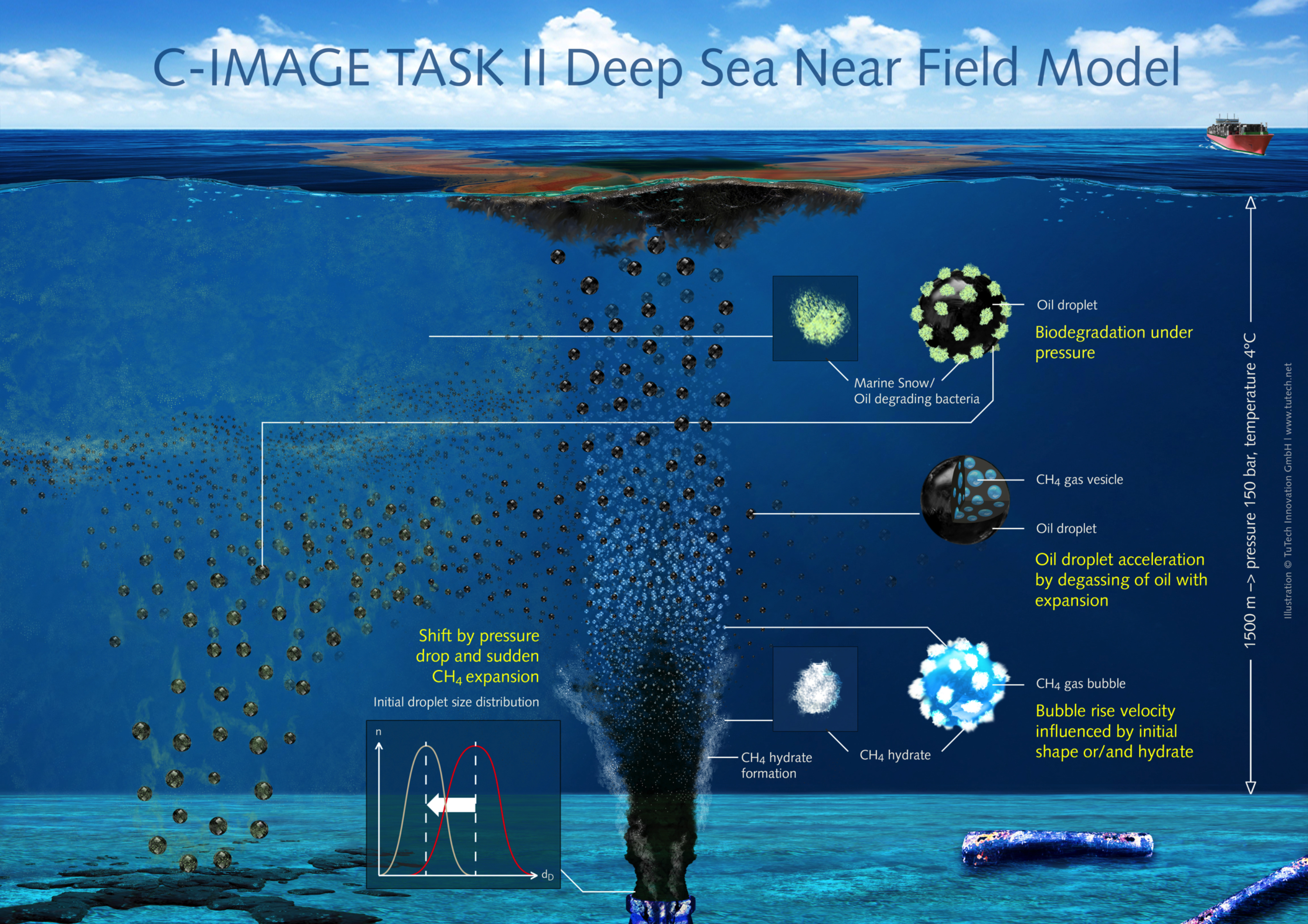
Simeon Pesch, Student of the Month, July 2016

The behavior and mechanics of deep sea plumes is been studied using samples of liquid oil, “dead oil,” expelled from nozzles to view turbulence in the plume and estimate how the droplets distribute in sub-surface and surface plumes. But how does a mixture of oil and gases, like methane and known as “live oil,” change droplet sizes and turbulence within a plume? Live oil is the natural way oil discharges from a well head, and Simeon Pesch is working to incorporate live oil into future oil fate models.
Simeon is a PhD student at the Institute of Multiphase Flows at the Hamburg University of Technology in Germany. His work with gas plumes makes him our C-IMAGE student of the Month for July 2016. We asked Simeon to share his research within the blog.
What path did you take to make it to where you are now? Bachelor’s degree, internship experience, working experience and what initially interested you in working with your TUHH colleagues?
In 2009 I began studying process engineering at the Hamburg University of Technology (TUHH) and in 2012 I got my bachelor’s degree. During my study I worked as tutor for the Institute of Multiphase Flows (IMS) for several years, teaching undergraduate students fluid mechanics.
In the year 2014 I went to Ghana for an internship in a petroleum engineering company. This was a very intense and instructive experience, not primarily in terms of engineering but also because I learned a lot about the culture and the way of solving problems there.
In 2015, I received M.S. degree. For my thesis, I carried out research on the measurement and characterization of turbulent flow structures in bubbly flows at IMS. After finishing I got the offer to work as a research assistant and PhD student on the investigation of oil spills in the C-IMAGE group at IMS/TUHH. Even though this is a quite unusual research domain for a process engineer, I felt that this was a great opportunity to work in an international and interdisciplinary environment on a considerable and recent research topic. So I took the chance.
What is your research focused on, how will your results contribute to improve understanding of oil spills? (What are your research questions?)
My research is focused on the oil and gas jet formation at the wellhead as well as the rise behavior of the hydrocarbons through the water column. These topics are at the interface of thermodynamics and hydrodynamics and a lot of different effects have to be considered. Thereby the ambient conditions are of major importance, since the high pressure and low temperature in the deep sea effect on many parameters like physical properties or solubilities and thus the hydrodynamic behavior of the involved substances.
My work is mainly based on experiments. We have several high-pressure facilities at TUHH at which I am working together with my colleagues. But of course theoretical considerations and the interpretation of the results are also part of my research. Since the overall goal of the C-IMAGE project is developing models and thus making the knowledge transferable, I aim to contribute to this goal as well. The size distribution of the bubbles and droplets in the jet and their further propagation through the water column are important input parameters for such models.
What research tasks are you completing this week (or this month)?
At the moment I am working at the installation and checking of a new high-pressure facility for the optical capturing of dispersed oil under varying conditions. I hope that the installation work will be completed by the end of this month.
Generally I am working on different matters. Besides my research I am also involved in teaching fluid mechanics, which was my favorite discipline during my study and still is. Furthermore I am playing a part in the organization of the Symposium on Deep-Sea Oil Spills which will take place in Hamburg in September of this year.
Which of your findings or research has been most eye-opening? Were there any moments or facts that just made you say “Wow! I did not expect that.”?
The most amazing finding is time and again how analogical different systems behave. By this I mean that many mechanisms and correlations that are developed for industrial applications also hold for comparable processes involved in deep-sea oil spills – and vice versa. Even though the actual substances and conditions always have to be considered (which makes it complicated), a transfer from industrial plants to the lab to the deep sea and back is basically possible.
Thanks a lot for giving me the chance to introduce my work to the community!



